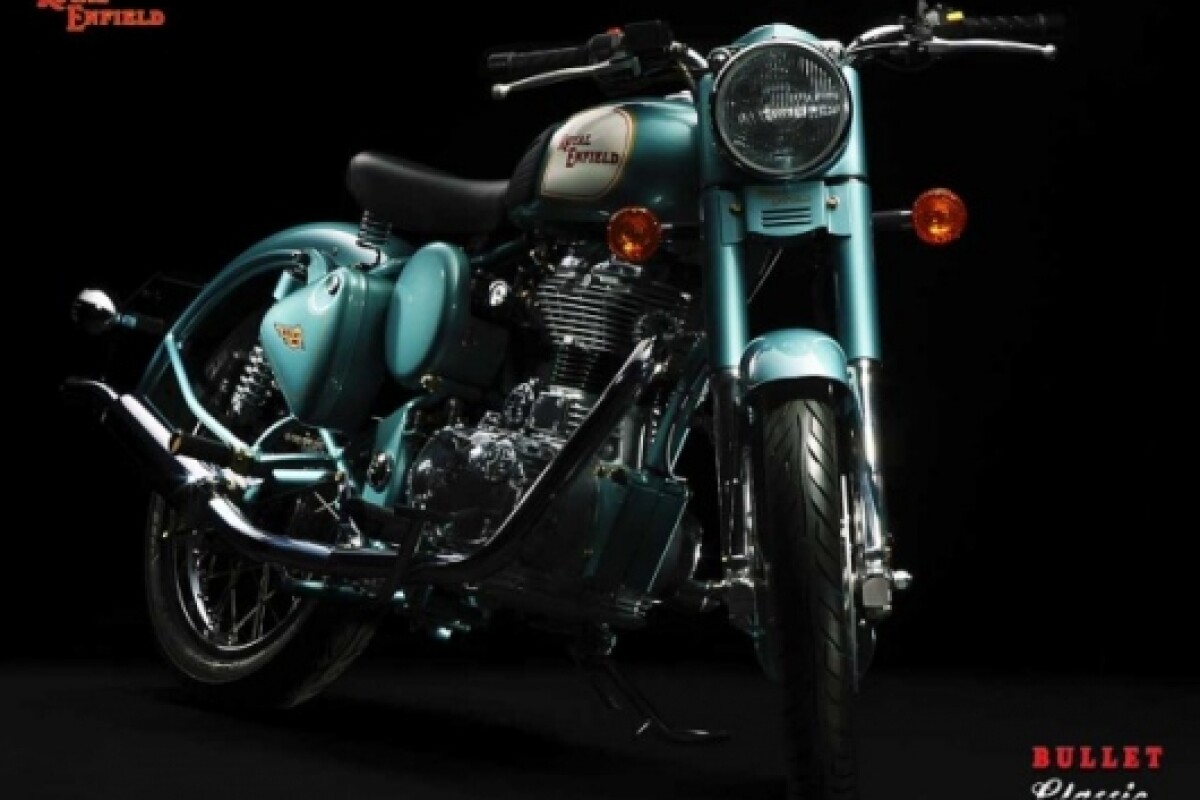January 13, 2009 The Royal Enfield Bullet has the longest production run of any motorcycle in history, having remained continuously in production since 1948, and with roots back to the1932 Bullet which was one of the fastest bikes on the road at the time – the Bullet has just been completely redesigned, and as the Bullet Classic, has all the hallmark design cues of its 75 year heritage, plus electronic fuel injection, a “unit construction” (one-piece), all-alloy engine/gearbox and a range of dress-up kits to turn it into a café racer or classic scrambler. It also makes more power than any previous Bullet, though with its modest 20.3 kW (27.3 bhp) output, it’s still regarded as a learner motorcycle in most countries. Most importantly, it’s cheap as chips, and returns better than 80 mpg.
The Royal Enfield and Bullet names derive from the company's links with the Royal Small Arms Factory in Enfield. Royal Enfield was the brand of the Enfield Cycle Company, which produced motorcycles, bicycles, lawnmowers, stationary engines, and rifle parts for the Royal Small Arms Factory in Enfield Lock. This legacy of weapons manufacture is reflected in the logo, a cannon, and the company motto "Made like a gun, goes like a bullet". It also enabled the use of the brand name Royal Enfield from 1890 onwards.
Just how the Royal Enfield name didn’t perish the same way as every other British motorcycle in history has done (sans Triumph), is an interesting story. In 1949, two young Indian businessmen started importing the Bullet motorcycles into the southern port city Madras, India under the name of the Madras Motor Company. In 1955, a factory was established and the bikes were sent in kit form from mother England for assembly, before full production of complete motorcycles started.
The English company became defunct in 1970, and the Indian company subsequently bought the name and rights, ensuring that Royal Enfield remained in continuous production.
Not surprisingly, the Royal Enfield name remains deeply loved by enthusiasts around the world, with a number of active distributors around the world nurturing the deep roots of the name and offering cheap and reliable transport that now meets emission standards. See these links for pricing and the array of dress-up-kits on offer in in the England, USA and Australia, and check out the image gallery for some of the faux models one can have, from scrambler through cafe racer.
There's a fabulous resource for all things Royal Enfield here, and if you're an enthusiast and near the UK in June, be sure to check out the Royal Enfield Factory Open Day on June 21/22, 2009.
























